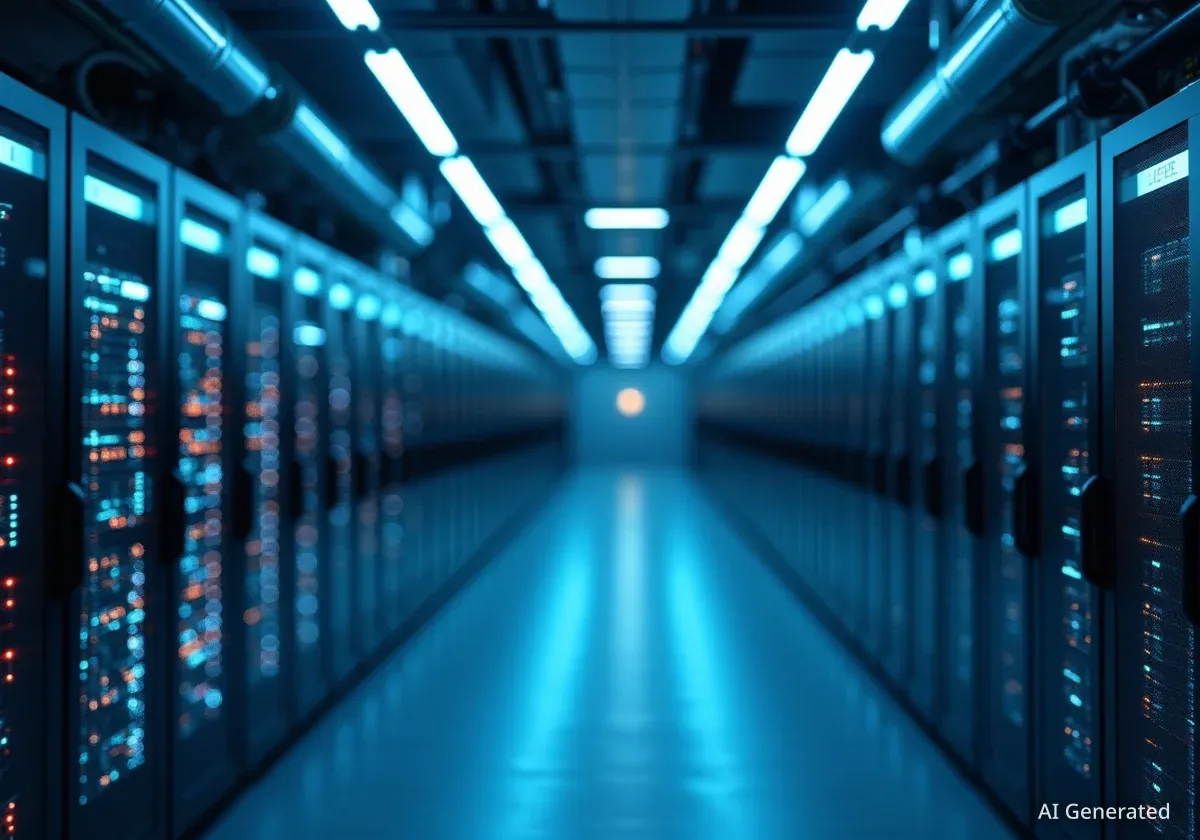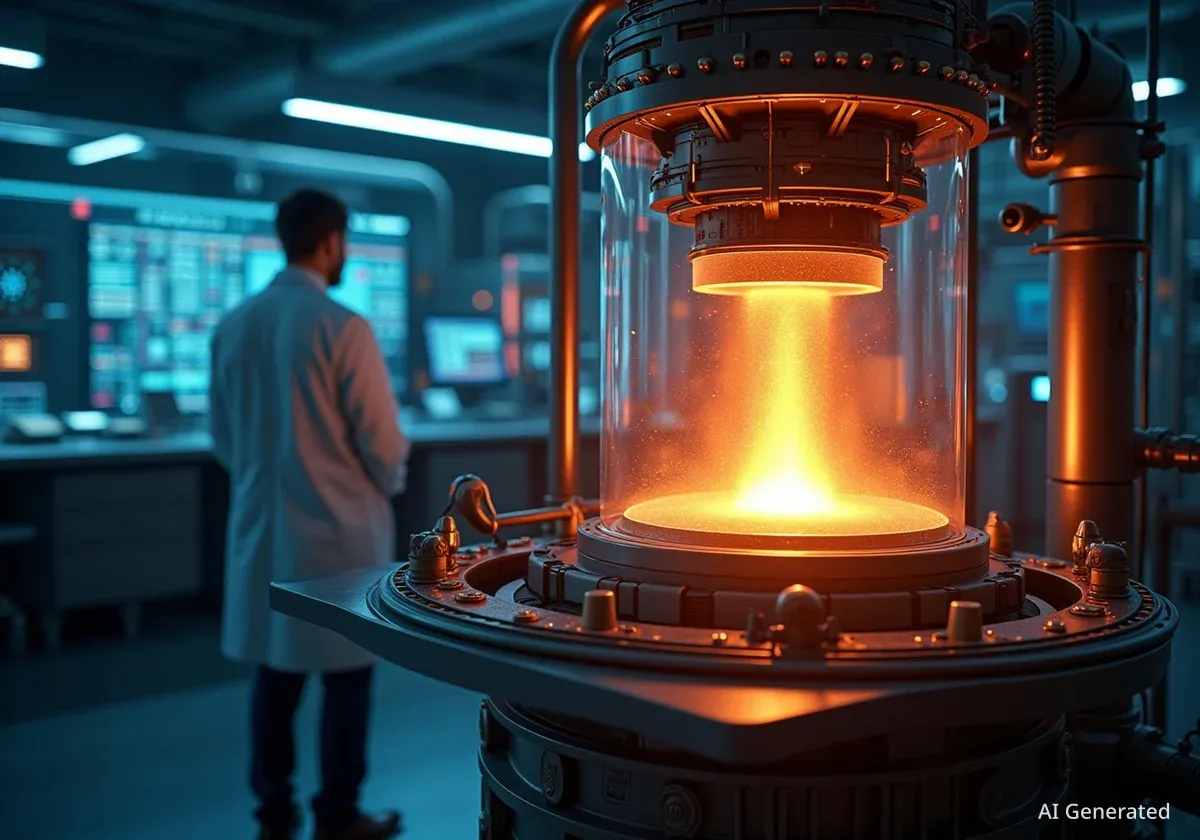Brookfield Asset Management announced a significant investment of up to $5 billion in Bloom Energy's fuel cell technology. This partnership aims to power new data centers globally. The move highlights a growing trend among technology companies to adopt cleaner energy solutions as demand for artificial intelligence (AI) and cloud computing services rapidly increases.
The collaboration comes as the AI boom drives a massive expansion in data center infrastructure. These facilities require substantial amounts of electricity. Companies are actively seeking power sources that are both reliable and environmentally sustainable to meet these escalating energy needs.
Key Takeaways
- Brookfield commits up to $5 billion to Bloom Energy for fuel cell deployment.
- The investment targets powering AI data centers with cleaner energy.
- Bloom Energy shares surged by 31% following the announcement.
- A new European AI factory site will be announced by year-end.
- Fuel cells offer an environmentally friendly alternative to traditional power generation.
Fuel Cells to Power AI Infrastructure
The agreement between Brookfield Asset Management and Bloom Energy focuses on the design and delivery of AI factories worldwide. This initiative includes a major project in Europe. Details about the European site are expected to be released before the end of the year, signaling a rapid deployment schedule.
The investment underscores the strategic importance of reliable and sustainable power for the expanding AI sector. Data centers are energy-intensive facilities. Their environmental footprint is a growing concern for both corporations and regulators.
Fact Check
- Bloom Energy shares rose 31% in premarket trading.
- The stock reached $113.72 per share.
- Brookfield previously committed 95 billion Swedish crowns ($9.98 billion) to a Swedish AI data center.
- Brookfield also pledged 20 billion euros for AI projects in France.
The Rising Demand for Cleaner Energy
The artificial intelligence industry is experiencing unprecedented growth. This growth translates directly into increased demand for data center capacity. Companies are investing billions of dollars to build and expand these critical facilities.
To power these advanced data centers, corporations are exploring various cleaner energy options. These include nuclear power, renewable energy sources like solar and wind, and advanced fuel cell technology. The goal is to reduce carbon emissions and ensure long-term energy security.
"Companies are turning to cleaner power sources such as nuclear, renewables and fuel cells as they invest billions into building and expanding data centers to meet the surge in demand for AI, cloud computing and digital services," a Reuters report stated.
This shift reflects a broader corporate commitment to environmental, social, and governance (ESG) principles. It also addresses the practical challenges of powering massive computational infrastructure sustainably.
Brookfield's Strategic Expansion in Europe
Brookfield is actively working to expand Europe's largest AI infrastructure cluster. This latest investment with Bloom Energy is part of a wider strategy. Earlier announcements highlight Brookfield's aggressive push into the European AI market.
In June, Brookfield revealed plans to invest up to 95 billion Swedish crowns, approximately $9.98 billion, to construct an AI data center in Sweden. This was followed by a separate commitment of 20 billion euros for AI projects in France. These investments demonstrate a clear focus on building significant AI capacity across the continent.
The European market is a key battleground for AI infrastructure development. Governments and corporations are keen to establish robust digital ecosystems. This supports innovation and economic growth.
Understanding Fuel Cell Technology
Fuel cells generate electricity through a chemical reaction. Unlike traditional combustion engines, they do not burn fuel. This process is more efficient and produces fewer harmful byproducts.
Depending on the type of fuel used, the main outputs can be water and heat. This makes fuel cells a more environmentally friendly option compared to burning fossil fuels. They offer a continuous power supply, which is crucial for data centers that require constant operation.
Bloom Energy's technology uses solid oxide fuel cells. These can run on various fuels, including natural gas, biogas, and hydrogen. This flexibility enhances their appeal as a sustainable energy solution.
Bloom Energy's Track Record and Future Outlook
Bloom Energy has already established partnerships to deploy its fuel cell technology in data centers. These collaborations include major players such as American Electric Power, Equinix, and Oracle. These existing deployments demonstrate the viability and scalability of Bloom Energy's solutions for critical infrastructure.
The $5 billion investment from Brookfield is expected to accelerate Bloom Energy's growth and market penetration. It will allow the company to expand its manufacturing capabilities and deploy its technology on a larger scale. This is vital for meeting the surging demand from the AI industry.
The partnership positions both companies at the forefront of sustainable AI infrastructure development. As AI models become more complex, the energy required to train and operate them will only increase. Cleaner, more efficient power sources like fuel cells will play a critical role in enabling this technological advancement responsibly.
The financial markets reacted positively to the news. Bloom Energy's shares saw a significant jump in premarket trading, indicating investor confidence in the partnership and the future of fuel cell technology in the AI sector. This momentum could drive further innovation and investment in sustainable energy solutions for data centers.





